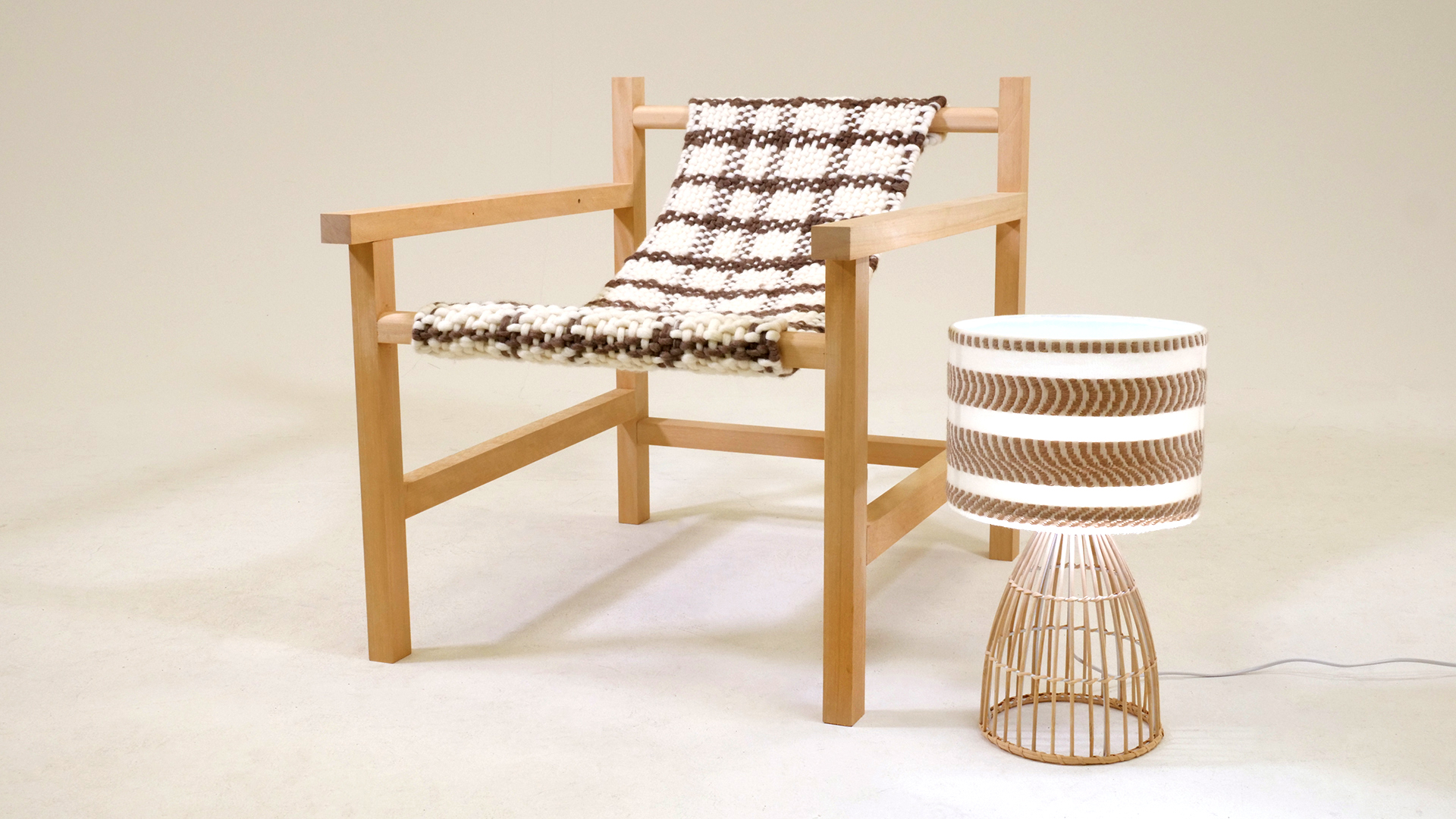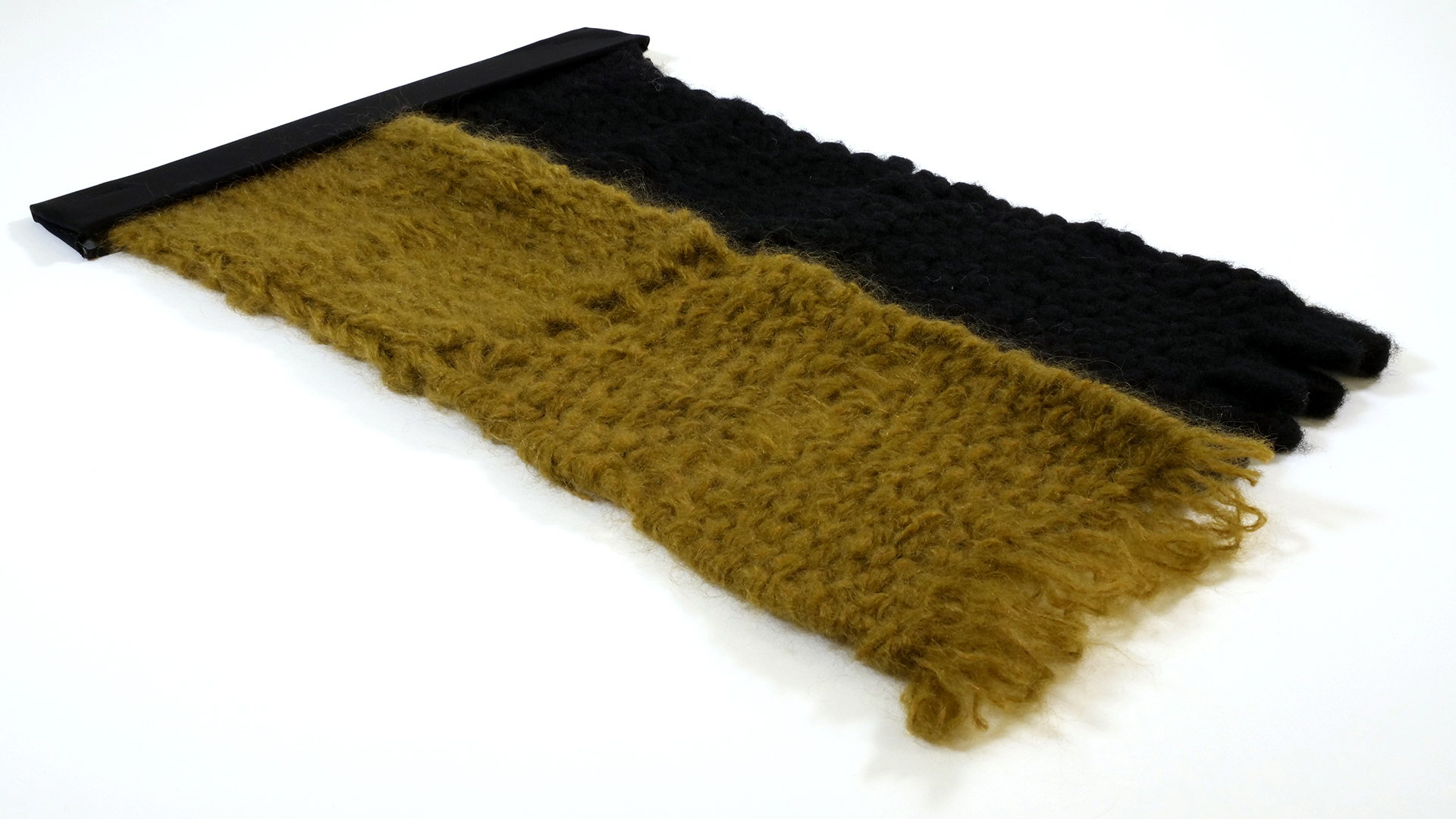
Jess Hadwin
Entwine
https://jesshadwin.wixsite.com/design

Weave and Knit Textile Collection
Entwine is an interior textile collection which explores the traditional textile practices of hand weaving and knitting through a combination of analogue and digital methods. Current world issues of the Covid-19 pandemic have inspired the designer to explore alternative ways of making textiles.
The textiles draw inspiration from a variety of traditional techniques blending design practices to generate textiles that promote well-being and comfort within the home. New Zealand wool and recycled materials are used to create textiles where texture and colour form a focus to showcase the design potential arising from the human aspect of handcrafting, which in turn inspires the digital through techniques and patterns.
The textile collection is intended for interior design purposes, with an emphasis on soft colours and cosy qualities to promote feelings of warmth and comfort. The Entwine range consists of a textiles collection and series of products including a handmade sling chair, lampshade and cushion covers.
This textile collection 'Entwine' utilises modern knitting technology to explore traditional techniques in knit design, as well as historic weaving techniques. It draws from the time-proven methods of making weave and knit to expand and explore contemporary textile design. Tapestry weaving techniques are employed to modern designs, and knit is explored with hand and computerised techniques. This shift between handcrafted and computerised methods of making is applied throughout the practice.
The lockdowns caused by Covid-19 led to a shift of design practice towards the inclusion of handcrafting as access to the digital knitting technologies was limited. The lockdown environment encouraged a design re-think, leading to a revival of traditional hand practices that have been set aside in favour of modern digital methods of production. This practice explores how a pandemic can affect textile design and how history has dealt with similar domains.
Contemporary crafting and the personal experience of the creator is reflected and focused on throughout the creative process of each textile design and product. Handwoven structures inspired many of the computerised knit designs; capturing the aesthetic of handcrafting in a digital format. The juxtaposition of computerised knitting versus handcrafting is illustrated by the contrasting tactility of the textiles produced. While automated knitting can be a relatively quick process from beginning to end, the handcrafting of weave could take up to a few days or weeks. Recognising the time required, instigated a mindful approach to making and allowed a more sustainable textile design creative process to emerge.
The Shima Seiki SRY inlay knitting machine was used to create the digital knits and a handmade tapestry loom the woven textiles. A new approach to textiles is conveyed through the mixture of weave and knit, which reflects the complex stress of life in today's society. This is expressed textually through a variety of contrasting fabric structures. The inlay knitting machine was used to combine aspects of weave and knit as it creates a more stable and rigid material than a typical knitted structure. Design inspiration was taken from historical twill weave structures to blend not only traditional and modern but also weave and knit. Wet felted wool rovings were used for the handwoven pieces to create a fabric for practical product applications. This crafted blend of digital and hand textile techniques combine to inform the contemporary interior design collection.



